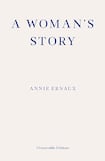
A Woman’s Story, first published in French in 1988, is Annie Ernaux’s account of her mother’s life. To her fans, it will be a joy, though it will be anathema to those heathens who remain unconvinced by her oeuvre, which consists of an accretion of memoirs, each focusing on different aspects of her life. Through this layering Ernaux has created a living art, one that exists both through and alongside her, almost like a written sister.
By writing her mother, Ernaux inevitably touches on France, women, death, class. She recalls her mother bringing her to museums, not for herself, but “for the satisfaction of helping me acquire the knowledge and the tastes attributed to cultivated people”.
This reminded me of a time when, driving to west Cork, my father quietly endured hours of a CD of Milton’s Paradise Lost, so as not to hamper my attempts at self-education. Ernaux’s genius, here as elsewhere, is in using her own experiences to bring into consciousness our painful unknown knowns, through a deeply relatable, hyper-personal objectivity.
She writes herself from the outside, and analyses her own methods while doing so: “Initially, I thought I would find it easy to write. In actual fact, I spend a lot of time reflecting on what I have to say and on the choice and sequence of words, as if there existed only one immutable order which would convey the truth about my mother (although what this truth involves I am unable to say).”
READ MORE
Above all else, A Woman’s Story is Ernaux’s affecting attempt to honour a woman she loved deeply. As she writes of her mother: “She preferred giving to everybody, rather than taking from them. Isn’t writing also a way of giving?”
The book was undertaken in the immediate aftermath of her death and, in writing it, Ernaux mourns the intimacy they shared. It was a closeness hampered, but ultimately undamaged, by all the usual resentments and conformities that can come between mothers and daughters: “We had gone back to addressing each other in that particular tone of speech – a cross between exasperation and mutual resentment – which led people to believe, wrongly, that we were always arguing. I would recognise that tone of conversation between a mother and her daughter anywhere in the world.”















